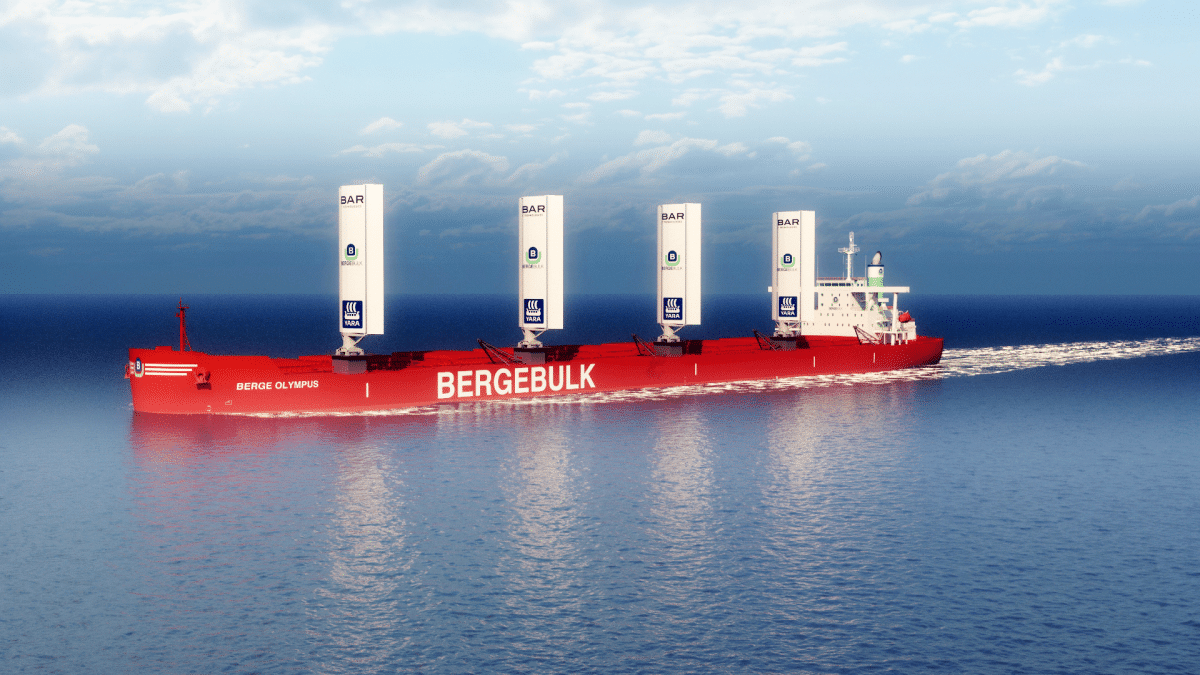
932 million tonnes. That’s the amount of CO2 emitted by the shipping industry in 2015, almost five times that of France over the same period, and that’s not counting the sulfur dioxide, nitrogen oxide and toxic heavy metals released by the dirty, unrefined fuel oil used by ships. If the picture of shipping-related pollution is black today, it threatens to get even darker. By 2050, they could increase by 50 to 250%, according to the International Maritime Organization (IMO), if nothing is done.
The shipping industry today relies almost exclusively on fossil fuels, an unsustainable strategy with terrible consequences for the ocean. Yet it’s only when tragedies occur that we become aware of their impact. At present, for example, the bulk carrier Wakashio grounded off the coast of Mauritius continues to spill its 1,000 tonnes of fuel oil right in the middle of a coral reef, despite pleas for help from the country’s president.

The challenge is therefore huge, and it is becoming increasingly obvious: shipping has to change. The IMO has set itself a target: to reduce CO2 emissions by 50% by 2050. And what if the solution lay in one of the oldest propulsion techniques used by sailors? For a long time, maritime transport had to make do with a source of energy whose abundance will strike anyone who has ever been to the sea: the wind. Until the advent of the first steamships in the 19th century, the vast majority of international trade was carried out under sail. Without emitting a single gram of CO2, sailors connected continents and initiated global trade. Lacking any other solution, they redoubled their ingenuity to make the slightest breath their engine. Faced with the challenge of reinventing itself, is shipping now heading back towards the world of sails?

New modes of transport
In any case, this is the gamble being taken by a number of companies, notably in France, some choosing to revive tradition, others proposing modern, innovative propulsion solutions.
The charm of authentic products, the aura of old sailing ships, the pride of selling a fair-trade product whose environmental impact has been minimized throughout the production chain – this is what French company TOWT (Transoceanic Wind Transport) offers. Following in the footsteps of Dutch pioneers Ecoclipper and their Tres Hombres brigantine, relaunched in 2007, the company has been importing rum, tea and coffee from the West Indies aboard converted schooners since 2009.

Labelled ANEMOS, products transported by sail, are becoming increasingly common in supermarkets. Aware of the unbridled expansion of this sector, the company has embarked on a project to build a cargo sailboat capable of transporting almost 1,000 tonnes, thus saving 10,000 tonnes of CO2 per year.
The sector seems to be generating a lot of enthusiasm, and is gradually gaining in legitimacy by attracting some veritable industrial behemoths among its customers. The first surprise is that Renault, the French automotive giant, will soon be transporting its vehicles to Saint-Pierre et Miquelon aboard two 136-meters sailing freighters chartered by the Nantes-based company Néoline, each capable of carrying almost 500 cars. In another major project, the French naval architecture firms Zéphyr & Borée and VPLP will be responsible for designing the 121-meters hybrid vessel that will carry the colossal Ariane 6 rocket to French Guiana. Far from resembling a traditional rig, this futuristic cargo ship will use a new automated sail technology, enabling it to double the efficiency of yesteryear’s sailing ships and achieve significant fuel savings (between 15 and 42%).

Finally, Grain de Sail, founded in 2010, has already launched its first cargo sailboat, the VOTAAN72, to transport the coffee and chocolate it produces. A pioneer in its category, it is due to make its first transatlantic crossing this autumn, a closely-watched test that will enable us to assess the viability of the model.
The giants of global navigation are in the process of converting.
What’s more, a veritable technological race is underway, as demand for innovative sails to be installed on the world’s biggest ships begins to grow. Finnish boat engine manufacturer Wärtsilä has teamed up with startup Norsepower to develop rotor sails. These sails, which resemble large chimneys, are based on an invention from the 1920s and take advantage of the Magnus effect to turn on themselves and move the ship forward. While some container ships were already using kites to save fuel, these strategies are now taking on a whole new dimension. The world’s leading shipping company, Maersk, has already installed two rotor sails on its supertanker Pelican. These have already reduced fuel consumption by 10%, echoing the Swedish titan’s ambitious strategy to be completely carbon neutral by 2050.
Although still in their infancy, these initiatives are good news. For the time being, sailing freight is still just a drop in the ocean of the 10.5 billion tonnes transported each year on the world’s seas. However, if the major companies start to take an interest, a new, potentially clean and sustainable market will open up, bringing with it new employment prospects and new, entirely carbon-free modes of navigation. So let’s set sail!



